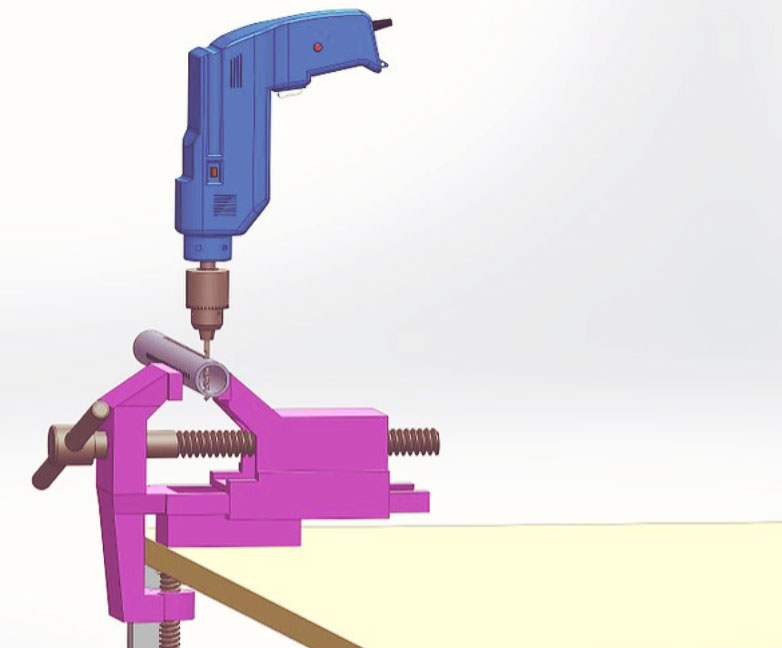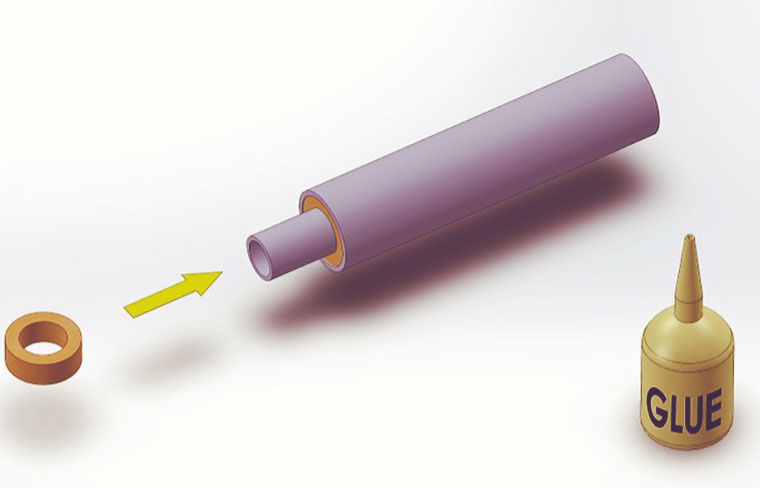- Drill a hole in the center of the can
- Insert the barrel of the gun into the can and trace around it with a permanent marker
- Cut out the traced circle with a sharp knife or an electric saw
- File down any sharp edges or burrs on the newly cut edge until it’s smooth
- Take off the end of the shotgun barrel, and insert the suppressor onto the barrel until it’s tightly fitted
- Make sure there are no gaps between the suppressor and barrel, and then use epoxy to glue them together if necessary
- Let the epoxy dry completely before using your new gun suppressor!
Assuming you are referring to a firearm suppressor (also called a silencer), there are a few things you need to do to properly attach it. First, you’ll need to drill a hole in the center of the can. Next, insert the barrel of the gun into the can and trace around it with a permanent marker. After that, carefully cut out the traced circle with a sharp knife or an electric saw. Finally, file down any sharp edges or burrs on the newly cut edge until it is smooth.
If you are attaching the suppressor to a shotgun, you’ll also need to take off the end of the shotgun barrel before inserting the suppressor.
There are different ways to build a gun suppressor, but the most common method is to attach it to the muzzle of the gun. You will need to purchase a muzzle-mounted device that can be attached to the end of your gun’s barrel. These devices are often made of aluminum or stainless steel and can be found at most firearms stores. Once you have your suppressor, follow these steps to attach it to your gun:
- Unscrew the suppressor from its paper packaging.
- Thread the suppressor onto the muzzle of your gun clockwise until it is tight against the firearm. You may need a wrench to tighten it properly.
That’s it! Your suppressor is now attached and ready to use. If you are looking for more information on gun suppressors, please check out our other FAQs. We would be happy to answer any of your questions.
There are a few different ways that you can build a gun suppressor, but the most common method is to purchase a commercially available kit. These kits typically come with everything you need to assemble the suppressor, including detailed instructions.
The first step is to disassemble your gun and remove the barrel. Next, take the baffles and spacers that came in your kit and attach them to the end of the barrel using screws or set screws. Once all of the baffles are in place, reassemble your gun.
Now it’s time to install the blast baffle. This is typically done by threading it onto the muzzle of the gun. Finally, attach the end cap to the blast baffle.
And that’s it! Your gun suppressor is now complete.
Of course, there are a few other things you need to keep in mind when using a suppressor. First, make sure you use the correct ammunition. Suppressors work best with subsonic ammunition, which is ammunition that has a muzzle velocity below the speed of sound. Second, be aware that suppressors can get very hot during use and should be allowed to cool down before being handled.
If you have any other questions about gun suppressors, feel free to contact us. We’re always happy to help!
Building a gun suppressor can be a challenging but rewarding task. There are several things to consider when designing and building a suppressor, such as a barrel length, caliber, desired suppression level, weight, and cost.
The first step is to choose the right barrel length for your suppressor. The longer the barrel, the more effective the suppression will be. However, longer barrels are also heavier and more expensive. A good rule of thumb is to select a barrel length that is at least twice the length of the bullet you intend to shoot through it.
Next, you need to select the right caliber for your suppressor. The most common calibers used in suppressed firearms are 9mm, 223/5.56mm, and .300 caliber. These calibers are popular because they offer a good balance between suppression and accuracy.
Once you have selected the barrel length and caliber, you need to decide on the desired level of suppression. The higher the suppressor’s rating, the more effective it will be at reducing noise. However, higher-rated suppressors are also heavier and more expensive.
Finally, you need to consider the weight and cost of your suppressor. Heavier suppressors are more effective but also more expensive. Lighter suppressors are less expensive but may not provide the same level of suppression.
Building a gun suppressor can be a fun and rewarding project. By following these tips, you can ensure that your suppressor is effective and affordable.
Building a gun suppressor (sometimes called a “silencer”) is a popular DIY project among firearm enthusiasts. While the process isn’t particularly difficult, there are a few key considerations to keep in mind.
The first step is to choose the right materials. A good quality aluminum or stainless steel tubing is essential, as is a high-strength welding rod. You’ll also need some sort of damping material, such as Velvetyne Acoustique or another similar product.
Once you have your materials gathered, you’ll need to cut the tubing to length and weld it together. The exact dimensions will vary depending on the design you’re going for, but most suppressors are around 8-10 inches long and 1-2 inches in diameter.
Once the tubing is welded together, you’ll need to add the damping material. This is usually done by stuffing it into the end of the tubing and then sealing it off with a cap.
And that’s it! With a few hours of work, you’ll have created your very own gun suppressor.


